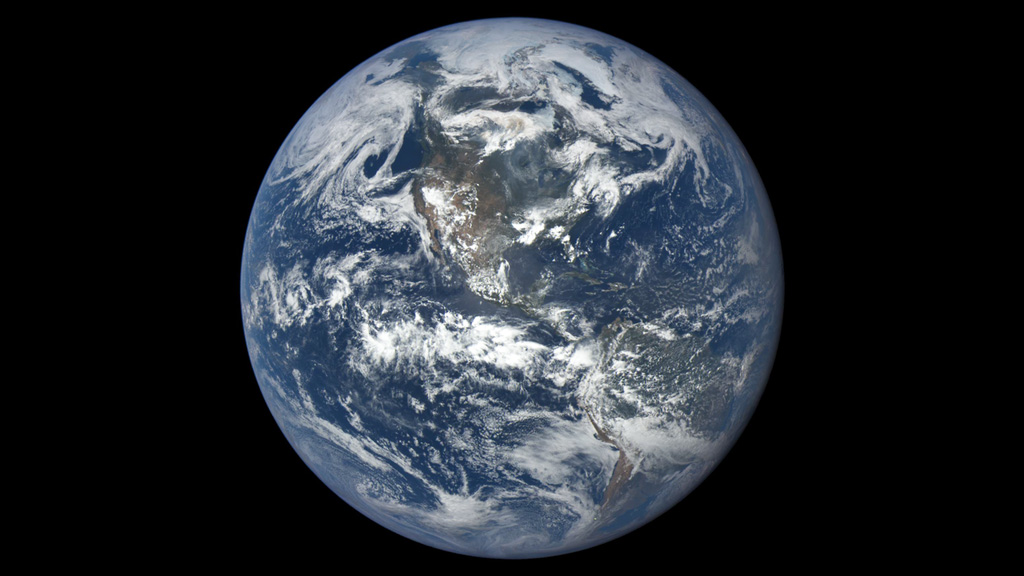EPIC Observations Pouring In: NASA at the 2015 AGU Fall Meeting
Less than a year after its launch on the Deep Space Climate Observatory (DSCOVR), NASA’s onboard camera is taking images of the entire sunlit side of Earth every two hours.
From its vantage point balanced between the sun and Earth, the Earth Polychromatic Imaging Camera (EPIC) provides a new view on our home planet – able to see the daily cycle of clouds and ozone, and the swirls of thick aerosols like dust as they move across oceans and continents. Because the DSCOVR satellite is always between the sun and Earth, EPIC also provides a new view for studying vegetation by naturally separating shadowed and sunlit leaves, which undergo photosynthesis differently.
Here is the YouTube video.
It’s a fresh view of Earth. Less than a year after its launch on the Deep Space Climate Observatory (DSCOVR), NASA’s onboard camera is taking images of the entire sunlit side of Earth every two hours.
For complete transcript, click here.

The 10 wavelengths captured by NASA's Earth Polychromatic Imaging Camera (EPIC) provide data on Earth’s surface and atmosphere. The 388 nanometer UV channel here allows scientists to study the energy reflected by ice sheets and clouds, an important measurement in climate studies. (Credit: NASA)

A day in the life of Earth, as seen from a million miles away. The EPIC instrument on DSCOVR capture images at least once every two hours, giving scientists a new vantage point from which to track cloud patterns, aerosols, vegetation and more. (Credit: NASA)

Although NASA’s EPIC instrument is normally trained on Earth, during camera tests after arriving in orbit scientists focused on the moon – and caught an eclipse as Earth passed in front. (Credit: NASA)
For More Information
Credits
Please give credit for this item to:
NASA's Goddard Space Flight Center
-
Producer
- Jefferson Beck (USRA)
-
Narrator
- Jefferson Beck (USRA)
-
Support
- Joy Ng (USRA)
Release date
This page was originally published on Monday, December 14, 2015.
This page was last updated on Wednesday, May 3, 2023 at 1:49 PM EDT.
